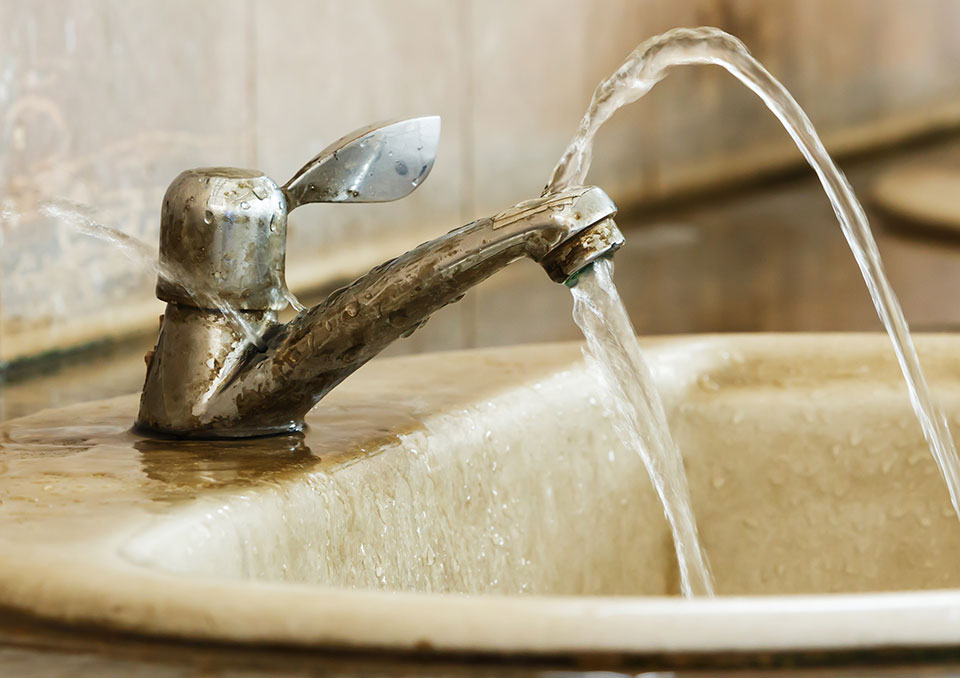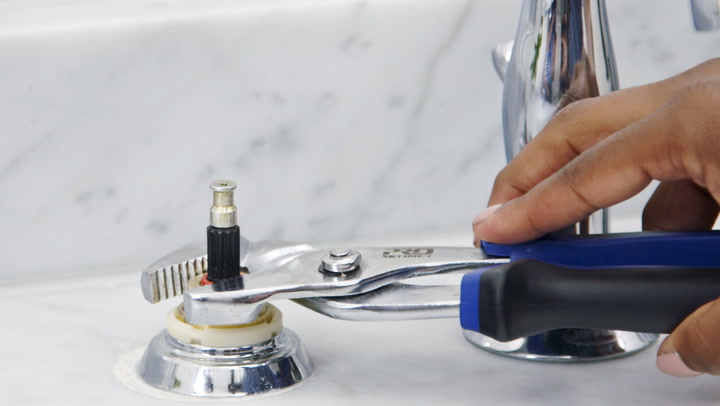What are your opinions about Why It's Important to Fix Leaky Faucets?

Dripping taps could look like a small inconvenience, however their influence surpasses simply the annoyance of the sound. From wasting water to sustaining unneeded financial costs and health and wellness dangers, overlooking a trickling faucet can lead to various repercussions. In this write-up, we'll explore why it's important to address this typical house concern promptly and effectively.
Wastage of Water
Environmental Impact
Dripping taps add significantly to water wastage. According to the Epa (EPA), a solitary faucet dripping at one drip per secondly can throw away greater than 3,000 gallons of water annually. This not only pressures water resources but additionally impacts ecological communities and wild animals dependent on them.
Financial Prices
Enhanced Water Bills
Past the environmental influence, dripping taps can inflate water costs significantly. The gathered waste over time equates right into greater energy expenses, which could have been stayed clear of with timely repair work.
Prospective Property Damage
Moreover, prolonged leaking can cause damage to fixtures and surface areas surrounding the faucet. Water build-up can trigger staining, rust, and also structural concerns if left neglected, resulting in extra fixing prices.
Wellness Concerns
Mold and Mold Development
The consistent presence of wetness from a trickling faucet creates an excellent atmosphere for mold and mold development. These fungis not just endanger interior air top quality yet likewise present health and wellness dangers, particularly for people with respiratory system problems or allergic reactions.
Waterborne Diseases
Stationary water in leaking faucets can come to be a breeding place for germs and other microorganisms, raising the risk of waterborne diseases. Contaminants such as Legionella microorganisms flourish in stagnant water, potentially leading to severe illnesses when ingested or breathed in.
Do it yourself vs. Expert Repair service
Pros and Cons of DIY Repair
While some may attempt to deal with a trickling faucet themselves, do it yourself fixings come with their own set of challenges. Without correct knowledge and devices, DIY efforts can worsen the issue or bring about insufficient repair services, extending the problem.
Advantages of Employing a Professional Plumber
Employing an expert plumber makes sure that the underlying cause of the leaking faucet is attended to effectively. Plumbing professionals have the proficiency and devices to identify and fix faucet issues efficiently, conserving time and reducing the threat of further damages.
Step-by-Step Overview to Fixing a Dripping Tap
Tools Needed
Before attempting to deal with a dripping faucet, gather the essential devices, including an adjustable wrench, screwdrivers, replacement components (such as washing machines or cartridges), and plumber's tape.
Usual Tap Issues and Their Solutions
Identify the sort of tap and the specific issue causing the drip. Common issues include worn-out washers, corroded valve seats, or faulty O-rings. Refer to manufacturer guidelines or on-line tutorials for step-by-step advice on repair work.
Safety nets
Normal Upkeep Tips
To stop trickling taps, perform routine maintenance such as cleaning up aerators, evaluating for leakages, and changing damaged parts quickly. Furthermore, take into consideration mounting water-saving gadgets or updating to extra efficient components.
Importance of Prompt Repairs
Dealing with trickling taps as soon as they're noticed protects against further water waste and potential damages, eventually saving both water and cash in the long run.
Effect On Residential Property Value
Assumption of Well-Maintained Home
Maintaining a building in good condition, including dealing with maintenance problems like leaking taps, boosts its perceived worth and desirability among possible buyers or occupants.
Impact on Resale Value
Characteristics with well-maintained plumbing components, consisting of faucets, command higher resale worths in the real estate market. Resolving leaking faucets can add to a positive perception throughout property evaluations and negotiations.
Environmental Duty
Specific Contribution to Conservation
Taking obligation for repairing dripping faucets lines up with wider initiatives towards water conservation and environmental sustainability. Every individual's actions jointly make a significant effect on protecting priceless resources.
Lasting Living Practices
By focusing on timely fixings and taking on water-saving behaviors, people contribute to sustainable living practices that profit both present and future generations.
Conclusion
Resolving a trickling faucet surpasses mere benefit; it's an essential action towards conserving water, decreasing monetary prices, and securing wellness and residential property. Whether via DIY fixings or expert support, acting to repair trickling taps is a small yet impactful method to promote accountable stewardship of sources and add to a much healthier, a lot more sustainable future.
How to Fix a Leaky Faucet: Step-by-Step Repair Guide
A leaky faucet may seem like a simple annoyance, but if it's not fixed promptly, that leak could cost hundreds to potentially thousands. From water damage to mold, mildew, and high water bills, even a tiny leak can be catastrophic if left unattended. Damage like this can even affect the overall value of your home, so it's important to take the right approach for leaky faucet repair. You may need the help of a plumber in some cases, but we've got a few tips you can try on how to fix a leaky faucet before calling the pros.
Four Faucet Types
When you're learning how to fix a leaky faucet, the first step is knowing what kind of faucet you're working with! There are four common types.
Cartridge Faucets
Cartridge faucets come in one- or two-handled varieties. In one-handled cartridge faucets, hot and cold water combines in a single cartridge. In the two-handled versions, hot and cold water are controlled separately and mixed in the faucet.
Ball Faucets
Ball faucets have a single lever you push up and down to adjust the pressure and rotate to change the temperature. A slotted metal ball controls the amount of water allowed into the spout.
Compression Washer Faucets
They're the oldest type of faucet, but they're still used in many homes — especially older ones. Compression faucets have two separate handles that, when turned, raise or lower the washer that seals a water valve. This valve stops water from flowing through the faucet when it is turned off.
Disc Faucets
Disc faucets rarely need to be repaired due to their maintenance-free design. The water flow is controlled by two discs — the upper one raises and lowers against a fixed lower disc, creating a watertight seal. If your disc faucet starts leaking, you may need to replace the seals or clean residue buildup from the inlets.
Fixing a Leaky Faucet
Step 1: Turn Off the Water
Whether you're learning how to fix a leaky bathtub faucet or how to fix a leaky kitchen faucet, always turn off the water supply to your working area when you're fixing a leak. The last thing you want is a flood added to your list of things to fix.
Look for the shutoff valves below your sink or around the tub and turn them clockwise to stop the water flow. If your faucet doesn't have shutoff valves, you may need to turn off the water for the whole house. Check to make sure it's off by turning the faucet on. If nothing comes out, you're ready to start the repair.
Step 2: Take Apart the Faucet
How you disassemble your faucet depends on the type of fixture you have. You can use a flathead screwdriver to remove the caps on top of the handle or handles for cartridge and compression faucets. Inside, you should see handle screws. Unscrew these with a screwdriver to remove the handle.
Disc- and ball-style faucets will typically have an inlet screw near the handle, and removing that will reveal the interior of the faucet.
Detach the Valve Stem
For cartridge- and compression-style faucets, you'll see the inner valve stem or cartridge once you remove the faucet handles. If you have a compression faucet, unscrew the brass valve stem. If you have a cartridge faucet, pull out the cartridge. If your cartridge has been in place for a while, it may require some tools or extra force to remove it due to mineral deposits.
Examine and Replace Parts
Once you've removed the parts, check them out to confirm what needs to be replaced. You may see corroded rubber washers, O-rings, stems, or cartridges. On a ball-style faucet, check the seats and springs for damage.
If you need to repair a leaky disc faucet, check the inlet and seals on the lower disc.
Once you determine what parts must be replaced, visit your local hardware store. Bring the damaged parts with you to ensure you can purchase the correct components to replace them.
Clean Valves and Faucet Cavity
If you've removed a stem or cartridge, you may notice mineral buildup in the faucet's threads. Use white vinegar to clean the valve seat by soaking it for a few minutes, then scrub it away with a soft toothbrush and rinse with warm water. You can also clean the interior of the faucet in the same way.
Reassemble the Faucet
Once your faucet is cleaned and the required parts have been replaced, it's time to reassemble it. Put the pieces back together and slowly turn the water supply back on. Doing this slowly is crucial because too much initial water pressure can damage the new hardware you've just installed.
https://homewarranty.firstam.com/blog/how-to-fix-leaky-faucet

I ran across that article about Why Is It Important To Fix Your Leaking Tap/Faucet? when doing a search on the internet. Sharing is caring. You never know, you will be helping someone out. Thank you for your time invested reading it.